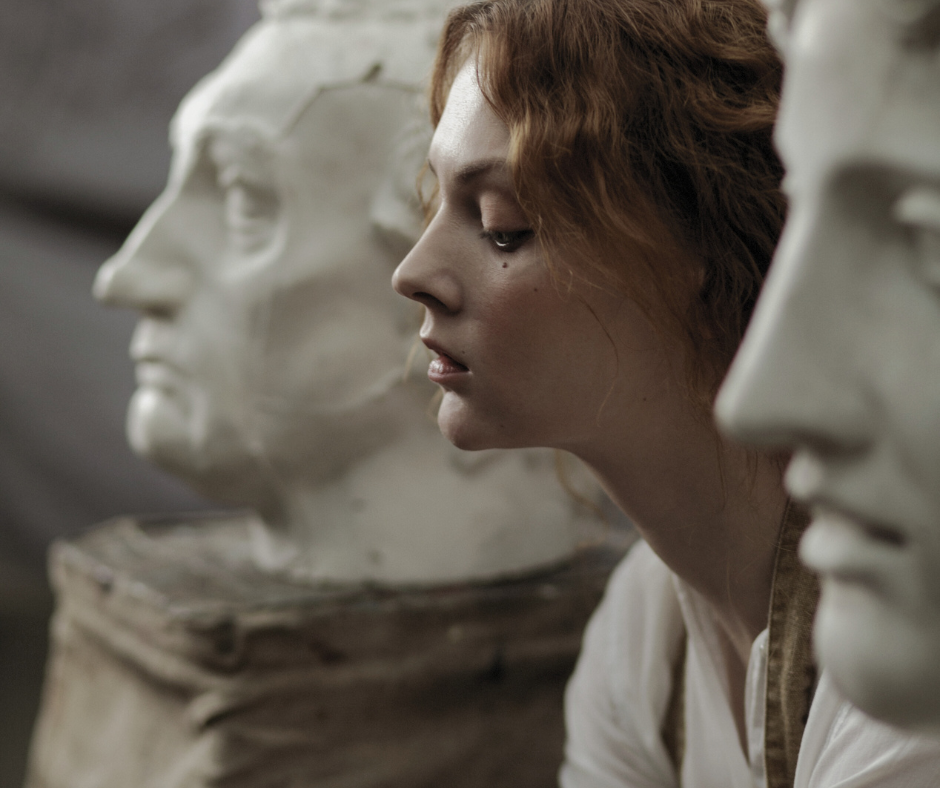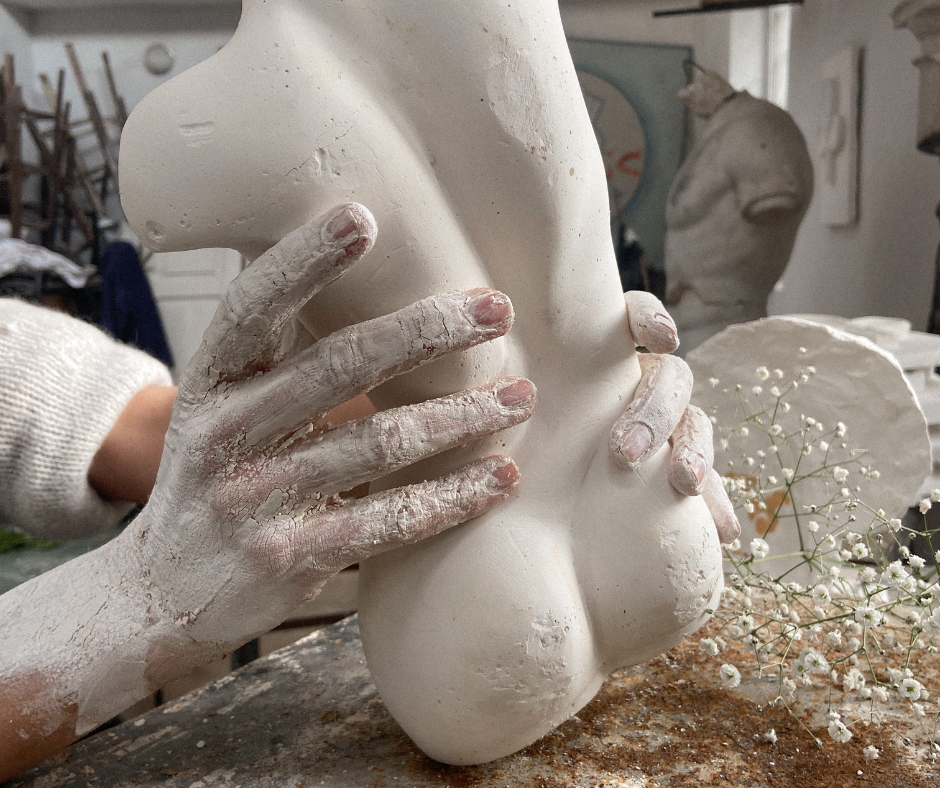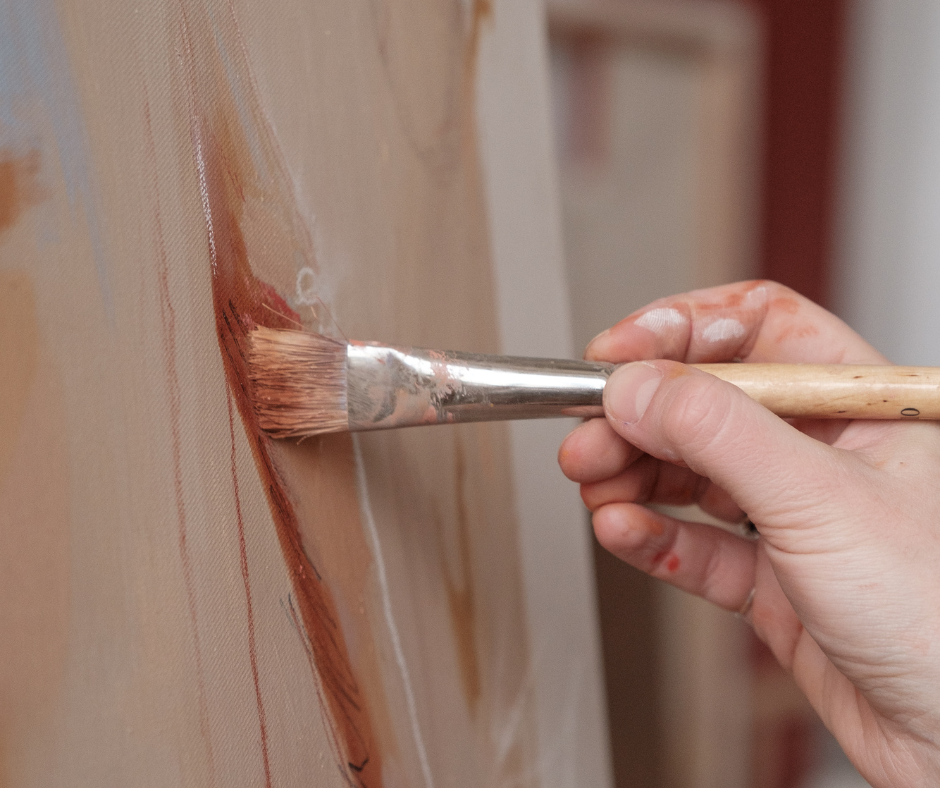

Artists in Business: Strategies for Pricing Artwork
Summary
Reflection Questions
Journal Prompt
Whether you have elected to sell art through an online marketplace or directly by commission, determining how to price art is a delicate process with which many creators consistently grapple. It involves navigating the delicate balance between art’s subjective nature and the need to recoup a certain amount of cash for the effort expended. Artists often find themselves pondering their worth, factoring in elements such as skill level, experience, and the considerable time invested in crafting each piece. The ever-evolving art market introduces an additional layer of complexity. Trends and demand within the market fluctuate, demanding artists stay attuned to these dynamics to ensure that their pricing remains competitive. In this post, we will consider the different ways artists price oil paintings, sculptures, and other fine art pieces. Let’s get into it!
Understanding the Art Market


The art market is a dynamic ecosystem where trends ebb and flow, impacting the perceived value of different genres of art. Understanding these market dynamics is key to pricing artwork effectively. Factors such as the popularity of certain styles, artists’ reputations, and even global events can sway demand and, consequently, pricing.
Market trends play a pivotal role in shaping the value of art. What’s hot today might not be tomorrow. As such, professional artists need to stay abreast of shifts in taste and preferences. Whether it’s contemporary, traditional, or avant-garde, each genre carries its unique value proposition in the market. Now, this is not to say that artists should shift their style, technique, or approach as the market changes. Understanding these fluctuations merely allows artists to better predict how such changes might impact their businesses.
Furthermore, the demand for specific themes or mediums can influence pricing. For instance, a surge in interest in abstract art might elevate the prices of abstract pieces. Conversely, a decline in demand for a particular style could have the opposite effect.
In essence, understanding the art market involves decoding its language of trends and demands. By doing so, artists can strategically position their work and navigate the complexities of pricing in a way that resonates with both the market and their artistic vision.
How to Price Artwork: Common Pricing Strategies


When selling artwork, determining how to price art such as oil paintings can be both an art and a science. For artists, setting an asking price that reflects the value of their oil painting while ensuring a living wage poses a challenge.
Establishing a good starting point involves considering factors like skill level, the medium used, and the hours invested. Watercolor paintings, for instance, might have a different pricing strategy than their oil counterparts.
Each professional artist must calculate a reasonable hourly wage, contemplating how many hours they’ve devoted to the creation of each piece. Whether selling work through a gallery that sells art or via an online marketplace, artists often seek guidance from an art consultant to ensure a consistent history of pricing that makes sense in the market.
To achieve the desired income, artists might decide to raise prices strategically, although a higher price tag should align with the perceived value of the artwork. Balancing the art of pricing with the practicalities of making a living requires thoughtful consideration and a keen understanding of the intricacies involved.
Now, let’s take a look at common pricing strategies adopted by artists.
Cost-Based Pricing Strategy


This method involves a meticulous calculation of the costs incurred during the creation process. Artists need to factor in not just the materials used but also the time invested, ensuring fair compensation for their skill and effort.
Overhead costs, covering studio rent, utilities, and other miscellaneous expenses, should also find a place in the pricing equation. While this strategy provides a solid foundation, artists must balance it with an understanding of market dynamics to ensure their prices align with perceived value.
Square Inch Pricing Method
For painters seeking a method with a bit more art geometry, the square-inch pricing approach comes into play. This method involves assigning a value per square inch of the artwork. Artists calculate the total by multiplying the number of square inches by the chosen rate.
This approach offers a straightforward way to quantify the value of a piece, especially for two-dimensional works. It’s often effective for emerging artists who wish to maintain consistency in their pricing.
However, it comes with its own set of challenges, as not all artworks fit neatly into the square-inch box. The same artists employing this method should be mindful of contextual factors and the potential limitations they might pose.
Value-Based Pricing Strategy


When it comes to pricing artwork, the value-based strategy takes center stage, emphasizing the intrinsic worth of a piece. This approach involves a nuanced evaluation of the artwork’s uniqueness, the artist’s reputation, and its overall artistic merit.
Artists considering this strategy factor in their experience, any awards or recognition received, and how their work stands out in the artistic landscape. By tying the retail price to the perceived value, artists can create a same price structure that reflects not just the tangible aspects of the artwork but also the intangible qualities that make it truly exceptional.
Comparative Pricing Strategy
The comparative pricing strategy approach hinges on meticulous research into the prices of similar artworks in the market. By understanding the pricing trends of comparable pieces, artists can strategically position their creations, ensuring they are competitive and aligned with market expectations.
However, it’s not merely a numbers game. Artists must also consider the unique elements of their work that set it apart—allowing them to strike a balance between market norms and the distinct value their art brings to the table.
Pricing for Different Platforms and Venues


Adapting your pricing strategy to different platforms and venues is important. Each selling art platform comes with its own set of dynamics, and considering these nuances can make a substantial difference in your artistic venture.
One size doesn’t fit all when it comes to pricing. Tailor your pricing to suit the platform or venue. For instance, the pricing on a fine art gallery website might differ from that on local art fairs. Be mindful of the target audience and market expectations specific to each space.
Artists, especially those venturing into online platforms, need to be vigilant about commission fees and platform policies. Many platforms charge a percentage of the sale as a commission. Factor this into your pricing art to ensure you’re not just covering your costs but also accounting for the platform’s share.
Negotiating with Buyers and Galleries


Before entering into negotiations, have a firm grasp of the value of your artwork. Highlight its unique aspects, the effort invested, and any accolades received. This knowledge forms the foundation of a compelling negotiation stance.
Establishing a rapport with buyers or galleries fosters a positive environment for negotiation. Understand their preferences and convey how your artwork aligns with their vision. While it’s crucial to know your bottom line, be open to reasonable price compromises. Compare prices from other artwork and see where you stand. Flexibility can lead to mutually beneficial agreements and long-term relationships.
It’s also important to understand your bottom line and flexibility to make better decisions about your art business. Clearly articulate the minimum price you’re willing to accept for your artwork. This serves as a non-negotiable boundary, ensuring you don’t compromise on the essential value of your work.
Understand your goals beyond financial gain. Whether it’s gaining exposure, establishing long-term relationships, or making a significant sale, prioritize these goals alongside monetary considerations. If a negotiation veers too close to your bottom line, communicate your boundaries assertively but diplomatically.
Articulate why certain aspects of your pricing are non-negotiable, but remember that every negotiation is unique. Consider the context, the buyer or gallery involved, and the potential long-term benefits. Evaluate each situation to determine the appropriate level of flexibility.
Dealing with Price Evolution


Should you keep your pricing consistent? Most artists often find themselves on a journey of evolution, and so do their prices. Here’s how to navigate the changing landscape.
Assess the Market and Adapt
If your art is gaining popularity and demand is soaring, it might be time for an adjustment. Assess the market and be willing to adapt your art prices to reflect the current demand for your work. As your reputation grows, so does the perceived value of your art.
Evaluate how shifts in your artistic standing might warrant adjustments in pricing. If your art style undergoes significant changes, your pricing may need to evolve accordingly. New techniques or themes can bring added value to your work.
Gradually Increase Pricing
Gradual increases in pricing contribute to the perceived value of your art. It signals growth and stability, instilling confidence in both existing and potential buyers. Sudden, significant price hikes can alienate your existing customer base. By implementing gradual increases, you maintain trust and loyalty, ensuring a smoother transition for your audience.
Incremental adjustments allow you to stay aligned with market trends without causing shockwaves. Monitor the market and make calculated, incremental changes as needed.
Common Pricing Mistakes to Avoid


As you navigate the art of pricing, steer clear of these common pitfalls:
Underpricing: Undervaluing your work undermines your artistic worth and can lead to long-term financial challenges. Research and understand the market to avoid setting prices too low.
Overpricing: On the flip side, excessively high prices can deter potential buyers. Be realistic and ensure your pricing aligns with both your artistic merit and market expectations.
Inconsistency: Inconsistency in pricing can create confusion and erode trust. Establish a clear and consistent pricing structure across different platforms and venues. If your pricing is consistent, potential buyers will like to deal with your business more.
Stay informed about market trends and the pricing strategies of your peers. This research forms the foundation for a fair and consistent pricing approach. If you decide to adjust your prices, communicate these changes transparently.
Keep your audience in the loop to foster understanding and maintain trust. Periodically reassess your pricing strategy. As your art career evolves, so should your pricing. Regular evaluations ensure that your prices remain fair and reflective of your artistic journey.
Communication and Transparency in Pricing


Be upfront about how you price your work. Clearly explain what goes into the cost of your art, whether it’s the time you put in, the materials cost, or the uniqueness of your artistic approach. Tell buyers why your artwork has a lower price work than others or why it’s more expensive and should be in auction houses and commercial galleries.
Lay out your policies regarding pricing adjustments, payment plans, or any other relevant details. This transparency helps buyers understand the parameters of their purchase and reduces the likelihood of misunderstandings.
Encourage open communication. Be approachable and ready to discuss a particular price range of digital art prints with potential buyers. Address their queries promptly and comprehensively, fostering a sense of trust and reliability.
Maintain consistency in your communication across different platforms and venues. Whether online, in a gallery, or at an art fair, a consistent and transparent approach builds credibility and trust. Take the opportunity to educate your audience about the artistic process and the factors that contribute to pricing. An informed buyer is more likely to appreciate the value of your work.
If you need to adjust your prices, communicate this openly. Explain the reasons behind the changes, whether it’s due to increased demand, shifts in your artistic style, or other relevant factors. Honest communication instills confidence and understanding.
Treat each buyer as an individual. Personalized interactions, whether in person or online, create a connection. Understanding their preferences and addressing their concerns fosters a sense of being valued, leading to repeat business.
Legal and Ethical Considerations in Art Pricing


Truth in Advertising: Adhere to truth in advertising principles. Represent your artwork accurately, avoiding misleading claims about its origin, value, or significance.
Avoid Price Fixing: Engage in fair competition by avoiding price-fixing practices. Collaborate with art galleries, agents, or other artists, but refrain from agreements that artificially control or manipulate prices.
Transparent Documentation: Provide transparent documentation about your artwork, including provenance, materials used, and any relevant details. This transparency builds trust with buyers and contributes to fair price and trade practices.
Clear Contracts: When collaborating with galleries or entering into agreements with buyers, ensure that contracts are clear and comprehensive. Specify pricing details, payment terms, and any other relevant conditions.
Mutual Consent: Obtain mutual consent in contractual agreements. Both parties should fully understand and agree to the terms, preventing misunderstandings and disputes in the future.
Revisit Agreements: Periodically review and, if necessary, revise contractual agreements. If you’re regularly selling comparable art, remember that the art market evolves, and so do your artistic journey and pricing strategies. Ensure that your contracts reflect these changes accurately.
Fair Compensation: Price your art ethically by ensuring fair compensation for your time, skill, and the intrinsic value of your creations. Striking a balance between your artistic worth and market dynamics is key.
Transparency with Buyers: Communicate openly with buyers about your pricing methods. Transparency builds trust and allows buyers to appreciate the value they receive when purchasing your art.
Avoid Discrimination: Price your artwork without discrimination. Treat all buyers equally and avoid discriminatory practices that may violate ethical standards.
Our Final Thoughts on Mastering the Art of Pricing


We leave you with a few key takeaways from our exploration of effective pricing strategies. First, be sure to explore various pricing strategies, including cost-based, square-inch method, value-based, and comparative pricing. Tailor your approach to align with your artistic style, market dynamics, and personal goals.
Second, be adaptable. The art market is ever-evolving. Embrace adaptability in your pricing strategies. Respond to changes in demand, your artistic evolution, and market trends with a strategic and flexible mindset.
Next, communicate transparently with your clients. Clear communication and transparency are the cornerstones of successful pricing. Educate your audience about the factors influencing your higher prices, and maintain consistency in your messaging across different platforms.
Fourth, hone your negotiation skills. Understand your value, be flexible when necessary, and build relationships that go beyond transactions. Effective negotiation fosters mutually beneficial agreements and long-term connections.
Fifth, navigate the art world with legal and ethical integrity. Adhere to fair trade practices, uphold contractual obligations, and price your artwork ethically to contribute to a trustworthy and thriving art community.
The art market is a dynamic landscape. Stay informed about particular market trends, pricing strategies employed by peers, and changes in the art world that may impact your pricing decisions. Periodically evaluate your pricing strategies. Assess the effectiveness of your current approach, and be open to adjustments that align with your artistic evolution and the evolving dynamics of the art market.
Engage in discussions within the art community. Exchange insights, share experiences, and learn from the strategies of fellow fine artist friends, or painters. Collective knowledge contributes to the growth and resilience of the artistic ecosystem.
When you’re figuring out how to price your artwork, keep in mind that it’s not just a matter of following a formula. It’s an ongoing conversation between your creative expression and the market’s response. Approach pricing with curiosity, adaptability, and a commitment to both your artistic vision and the ever-changing art world. Happy pricing!
By Armela E.








